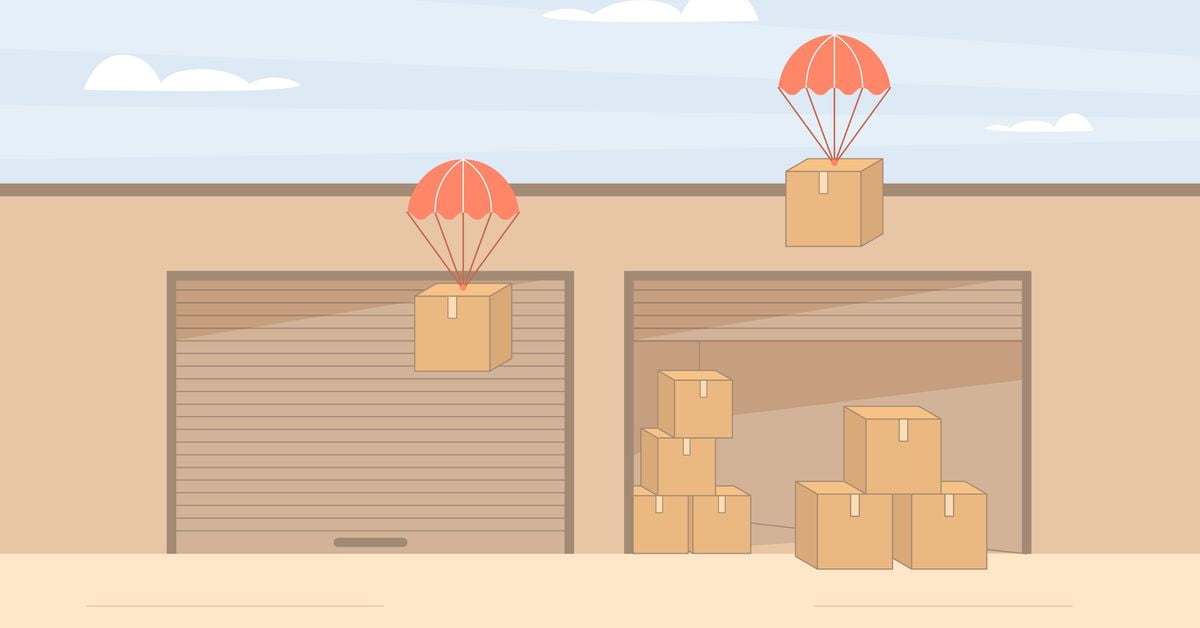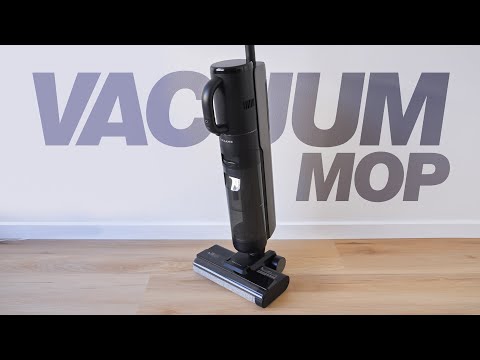
“Can I tell you a really easy way to make money online?” asks Maddie, a doe-eyed 20-something, in a TikTok that’s been viewed over 1 million times. It is so easy, in fact, that making money “basically requires no skill at all” — just a laptop and a wifi connection.
Maddie is one of the many hustle-culture figures on the internet who has gained popularity by encouraging their followers to start a business, usually through a practice called drop shipping. All a person needs is an idea of what they’re going to sell, a website, and boom, they’ve got a potentially profitable side hustle that could make anywhere from a couple hundred dollars to a couple thousand per week. “We’re going to be drop shipping with Printed Mint,” Maddie goes on, referring to a print-on-demand company that creates customized products. “Don’t be afraid of that word.”
A few years ago, this disclaimer — that users shouldn’t “be afraid” of drop shipping — might not have been necessary. And several years before that, most people probably hadn’t ever heard of the term unless they worked in retail operations or supply chain management. Drop shipping is the method of shipping an order directly from a manufacturer to a customer’s home, without the retailer holding any inventory. This business model actually predates the internet by several decades and has become integral to how e-commerce operates.
Today, however, many consumers associate drop shipping with a breed of semi-shady e-commerce sellers, notorious for arbitraging wholesale items for profit and relying on the trappings of small businesses to gain shopper trust. These sellers only serve as the middleman between consumers and manufacturers, without seemingly providing any labor or value-add to the products they’re selling. As a result, they’re often regarded as scammers or fraudsters. Michigan’s attorney general has even issued a consumer alert on drop shipping, cautioning people to be wary of whom they buy from online.
Through years of commercialized conditioning, the average shopper has grown accustomed to buying things from online brands they’ve never heard of. People don’t often wonder about where their stuff comes from, how it’s made, or why it takes so long to arrive. Consider the “TikTok-made-me-buy-it” phenomenon, which turns a faddish gadget like a sunset lamp or LED lights into a coveted item for an online audience. This behavior creates a ripe environment for all kinds of drop shippers, from the “reputable” sellers to the novices hoping to earn a quick buck.
Drop shipping — and the forces that enable an individual to outsource, buy wholesale, rebrand, and sell overseas goods — is a pronounced feature of global capitalism, not a bug. Aided by e-commerce platforms like Amazon and Shopify, this model has sprung from the interwoven, complex network of material suppliers, manufacturers, distributors, and sellers to affect nearly every American who shops online. Still, these business ventures are rarely regulated, at least in the US. Drop shipping has been allowed to persist and proliferate with the backing of some of the biggest e-commerce companies in the world. So, are these “scams” or potentially legitimate business endeavors? It depends on how you consider their middleman role — and, by extension, how these intermediaries are enabled by the global capitalist economy.
What is drop shipping?
Table of Contents
Per its simplest definition, drop shipping is a way for retailers to fulfill customer orders. After a customer purchases a product — online, in a physical store, over the phone, or in a catalog — the order is shipped directly from the wholesale supplier to their home, so the retailer doesn’t have to keep inventory on hand. This method was historically championed by mail-order companies, like J.C. Penney, Sears, and Ikea, and later brick-and-mortar stores to sell furniture, appliances, mattresses, or products that were too unwieldy to constantly keep in stock.
With the e-commerce boom in the 2000s, more retailers turned to drop shipping to efficiently fulfill online orders. Wayfair, one of the internet’s biggest furniture stores, is a drop shipper; it doesn’t manufacture any of the products it sells, but works with a network of 11,000 suppliers to drop ship listed products directly to customers.
Over the past two decades or so, an emergent class of independently run drop shippers has entered the e-commerce equation, made possible first by platforms like Amazon and eBay, and later Shopify. These are virtual brands and storefronts with little capital, no inventory, and few employees. They are essentially digital facades constructed by independent entrepreneurs, who, in the model of Wayfair, don’t own or handle any physical inventory before setting up shop. These solo merchants tend to provide very little or vague information about a product’s provenance. As a result, many consumers regard drop shipping, and the cottage industry of e-commerce entrepreneurs behind these enterprises, with disdain.
[embedded content]
“Most drop shippers don’t have a direct relationship with the factories they source from, and aren’t able to verify the authenticity or quality of the product,” said Sid Gupta, CEO of Quince, an online marketplace that ships goods directly from manufacturers to consumers. “All these factors are open questions for consumers, who’ve only gotten smarter and savvier over time.”
The term has a loaded meaning, according to Ayelet Israeli, a marketing professor at Harvard Business School: “We know that many direct-to-consumer and digital-native brands use the drop-ship model to deliver products, but people don’t consider them to be drop shippers.”
What is the difference, then, between a drop shipper and a direct-to-consumer (DTC) startup? DTC brands like Allbirds and Casper use the drop-ship model to deliver goods, but have significantly more control over how their products are made and shipped out. These companies are also bolstered by venture capital funding, which helps them scale quickly. These categories, however, are not mutually exclusive. A DTC brand, like the fitness apparel company Gymshark, can begin as a drop-shipping endeavor before fine-tuning its supply chain and product design.
That’s because drop shipping has a very low barrier to entry. Launching a store is so easy, in fact, that reporters have blogged about their attempts at doing so. On YouTube, tutorials about how to start drop shipping can range from about 10 minutes to an hour, where an experienced drop shipper walks a newbie through the process of creating a store and finding a product to sell.
Find a unique product on AliExpress
Build a store for the product on Shopify
Drive traffic to your store through ads on Facebook, TikTok, Snapchat, Google, etc.
Once demand is validated with dropshipping, begin private labeling and ordering in bulk from Alibaba.
— Ricky Amador (@ecomricky) November 1, 2021
“The first important step in drop shipping has always been and will always be finding your product,” advises one seller. “This is what you’re going to sell and advertise to customers, so you have to make sure your product has demand or is trending so you can make money from it.” Then, on an e-commerce platform like Shopify, the seller can build out a storefront centered on that product, mark up the product costs, and find an overseas supplier or wholesaler through AliExpress. Only when an order is placed on the drop shipper’s site does the seller have to purchase the product (at wholesale price) from the supplier, who is then responsible for shipping the item to the customer.
As profitable as this model can be in the short term, drop shippers have to eventually scale for the business to retain customers and grow. Otherwise, it might not be profitable in the long run. A seller can, for example, improve shipping times and offer more products, factors that might attract customers. “A lot of the very good drop-shipping brands are constantly evolving,” said Tan Choudhury, a 24-year-old entrepreneur from Puerto Rico, who runs multiple drop shipping businesses and a YouTube channel. “Lifting a product off AliExpress is a good way to get started, but once you have capital, the ideal goal is working towards private-labeling your products and creating a real brand, like what Gymshark did.”
How did drop shipping get everywhere?
In his 2017 investigation of Instagram’s many dropshipping brands, the Atlantic’s Alexis Madrigal identified Shopify as the favored e-commerce platform behind these online stores. Shopify, according to Madrigal, served as “the base layer for an emerging ecosystem that solders digital advertising through Facebook onto the world of Asian manufacturers and wholesalers who rep their companies on Alibaba and its foreigner-friendly counterpart, AliExpress.” While Shopify is largely responsible for powering this latest iteration of dropshipping brands, it was not the first company to do so.
In 2021, online sellers have multiple avenues to grow their shop: through influencer marketing, targeted ads, or by producing viral content. About two decades ago, this level of growth was largely unfeasible — until eBay and Amazon opened up their platforms to third-party retailers.
Third-party sellers, a category that includes drop shippers, currently account for about 50 percent of Amazon’s commercial activity. Thousands of merchants sell through Fulfillment by Amazon (FBA), a program akin to drop shipping that guarantees Amazon about a 15 percent cut of sales. FBA requires sellers to invest in merchandise — whether their own or from an overseas manufacturer — and store it in Amazon warehouses for the company to handle packing, shipping, and returns. For shoppers, this offers a semblance of quality control. Even if a product is technically sold by drop shippers, the order arrives in an Amazon package and is subject to returns and refunds under Amazon policy.
“Amazon, and before that eBay, helped sellers generate traffic for individual products,” said Alexander Chernev, a professor of marketing at Northwestern’s Kellogg School of Management. “Sellers didn’t need a physical store to ship things out. They didn’t even have to sell multiple products. They could be very successful, even if only one product they sold was in high demand.”
“At some point, sellers realized that they didn’t need Amazon to generate traffic anymore,” Chernov said. “They could start their own website. And social media, in a sense, replaced some of the product discovery functions that Amazon provided.”
This is where Shopify (and other website builders, like WordPress’s WooCommerce) comes in. The platform, according to Chernev, “connected the dots for sellers” by providing back-end support: website creation, payment processing, email marketing, assistance with targeted advertising, and perhaps most crucially, a drop-shipping service called Oberlo that pulls products directly from AliExpress. Through these features, Shopify became the platform of choice for modern drop shippers and anyone who wanted to sell stuff online, from direct-to-consumer brands to content creators. The expansion of drop shipping is a testament to Shopify’s emerging dominance in e-commerce, and is sustained by the rise of shoppable social media.
To be on the internet is to exist in a prolonged state of ambient shopping. You can be scrolling through Instagram or TikTok or Pinterest and be presented with a host of nifty, must-have gadgets. Products and brands can suddenly garner cult followings after going viral, sometimes overnight. This is a boon for drop shippers, who try to anticipate or even kick-start trends by either going viral or bombarding users with ads. Take, for example, Halara, the athleisure brand behind the TikTok-famous exercise dress. It is rumored to drop ship from AliExpress, but users don’t seem to care. They’ve grown familiar with the brand through its relentless ad strategy.
Social media, then, creates a layer of legitimacy to these endeavors — which I’ve referred to as “ghost stores” run by ghost sellers — while directing customer traffic to them. This symbiotic relationship between social media and sellers is, of course, a major boon for Shopify. One company manager described it this way: “Social media networks provide the audience, and Shopify provides the storefront.”
Shopify is in a position to be, as Patrick Sisson reported for Vox, “arming the rebels” by positioning itself as the small business antithesis to Amazon: “Shopify argues that by creating a merchant-first software product and constantly adapting to fast-moving changes in how we shop online, it helps support more entrepreneurship and new business, which ends up benefiting the consumer in the long run.” Its merchants don’t have to succumb to the rules of a virtual marketplace and can maintain some level of independence, unlike Amazon sellers.
The drop-ship craze, though, has threatened all kinds of small business owners, from artists to designers. They have to contend with copycat designs and compete with lower prices set by independent drop shippers, all while holding limited stock.
Ghost sellers have invaded most marketplaces in recent years, even secondhand resale platforms like Depop. (Since March 2020, Depop has cracked down on drop shippers.) On Etsy, which is owned by Depop’s parent company, the prevalence of drop shippers appeared to alter the fabric of the site, which was once a haven for handmade, crafty goods. It began with Etsy’s policy change in October 2013, when sellers were allowed to work with outside manufacturers to make their products, so long as the designs were original. This decision, as Kaitlyn Tiffany explained in her excellent 2019 piece for Vox, was necessary so sellers could keep up with customer demand. In hindsight, it was a turning point for Etsy, which grew cluttered with low-quality junk — mostly print-on-demand products that were drop shipped to customers.
Nancy Quiaoit, an artist and Etsy seller since 2013, told me that it is increasingly difficult to find handmade or specialty items through Etsy’s search function. She surmised that since drop shippers and resellers list items with high quantities attached, their stores rank higher on Etsy’s search.
“Recently, I went through seven pages [of Etsy stores] and only found two stores, which weren’t reselling items, printed T-shirts, or cheap jewelry which aren’t really handmade,” Quiaoit told me in an email. “These are simply printed pieces that can be found literally anywhere.” Ultimately, Etsy turned a blind eye to lower-quality merchants, wholesale resellers, and drop shippers. It was a financial trade-off, and the company grew more profitable as it blindly welcomed more sellers. Etsy had its biggest sales year to date in 2020, earning $1.7 billion in revenue.
Who ultimately benefits from drop shipping?
The biggest winners in the Great Drop-shipping Game are still the tech platforms that are actively profiting from it, but every day, thousands of drop shippers, from the aspiring to the seasoned, hope they can emerge as the second-biggest winners of the e-commerce boom.
The hustle doesn’t always reap the promised rewards. Drop shipping isn’t exactly a pyramid scheme, but its economic distribution is staggered like one. (Such is also the case for global wealth distribution and corporate inequality.) It’s a finite endeavor, even though some entrepreneurs like to boast that it’s a pathway to corporate and financial freedom. New sellers are competing for attention and money from a limited pool of shoppers, sourcing from the same list of mass-produced goods on AliExpress or Zendrop.
There are a handful of sellers at the very top who claim to be raking in millions in revenue, thereby becoming able to quit their jobs, maybe jet-set around the world, and invest the money they’ve made into other ventures. And at the bottom are the vast majority of drop shippers, whose stores are unprofitable and fail to “take off.” These participants eventually quit, and a few even lose money from their initial investments. In this sense, drop shipping can seem like other get-rich-quick schemes on the internet, like MLMs, with its share of gurus and doctrinaires.
In the middle tier of this pyramid are the entrepreneurs who are earning a living wage, or supplementing their drop-shipping income through paid digital courses and personalized one-on-one calls. These gurus are, in a sense, drop shipping business advice and building an audience through hustle culture platitudes. They are glorified pawns in the creator economy, a middleman monetizing the secrets of his unverifiable “success” and marketing it to anyone willing to pay for it. Meanwhile, Reddit and e-commerce forums are full of struggling- to semi-profitable sellers, who for the most part aren’t earning enough to turn their store into a full-time endeavor.
Even those who are raking in sales feel that they are “living on borrowed time,” wrote journalist Sirin Kale for Wired UK. Apparently, Facebook is growing hostile to drop shippers and advertising costs are ballooning. TikTok can increase the likelihood of a product going viral for free, but the internet’s trend cycles are hard to predict and the app’s algorithm is hard to crack.
A number of successful drop shippers, too, have called it quits after a certain amount of time. As a way out, they sell their company to private investors and use that money to search for another business idea to scale. The end goal, according to Choudhury, is to turn his ventures into fully fledged DTC brands.
Meanwhile, the onus has increasingly fallen on the shopper to determine the legitimacy and quality of the stuff they buy, even when platforms incline them to make impulse purchases. “People don’t care about brands the way they used to,” said Israeli, the marketing professor at Harvard. “Amazon and other e-commerce platforms have turned everything into a commodity that’s distinguishable only by price. Most consumers buy items based on reviews and price.”
Still, shoppers like to believe there’s something special or distinctive about the things they buy, even when it can be sourced elsewhere. This is not as much of a concern for more commonplace “commodity goods,” like a water bottle or a yoga mat, so long as they’re affordable and arrive as promised. The internet has made us so removed from the things we buy that it matters very little where they’re from. A customer is often only really enraged once they realize the blatant scale of the mark-up; for example, if they discover that an item of clothing they bought for $90 costs only $26 on AliExpress.
And while there is an inherent layer of risk to buying anything on the internet, Amazon, PayPal, and other payment providers have stringent customer protection policies that allow people to dispute transactions or request refunds for defective or faulty products.
“Consumers are getting smarter, which means they’re no longer falling for an untrustworthy or scammy-looking website,” said Jordan Welch, a 23-year-old former drop shipper who makes YouTube videos about e-commerce and marketing. “Facebook is doing a really good job at cracking down on ads with copyright or stolen content. They will shut down your store if enough customers give you negative reviews.”
It’s no longer enough, according to Welch, to drop-ship for a quick buck and “burn,” or get rid of, the store. “You have to do things ethically, just like with any business,” he said. Welch added that he’s currently turning his former drop-ship venture into a DTC brand by working directly with manufacturers and shipping companies from China.
The drop ship to DTC pipeline is why Welch thinks the model is here to stay: “What drop shippers are doing is finding a product and connecting people with that product. People have been doing this way before the internet, way before Shopify. We might one day switch to advertising in the metaverse, but I don’t think this exchange will ever go away.”






